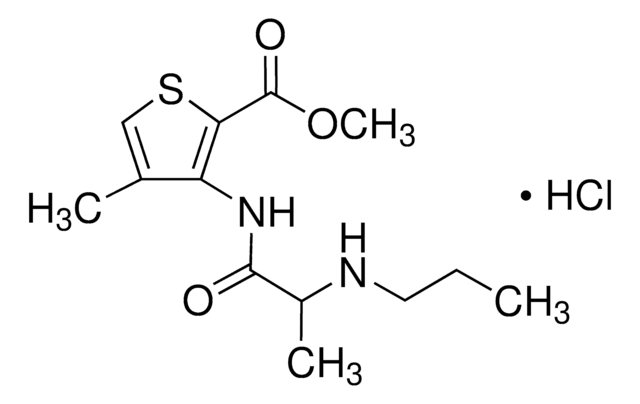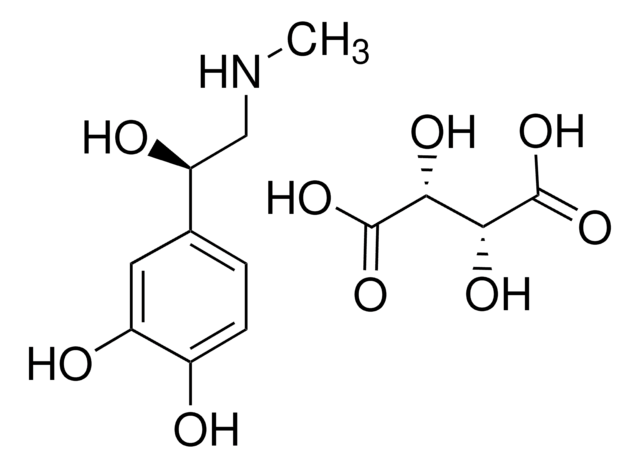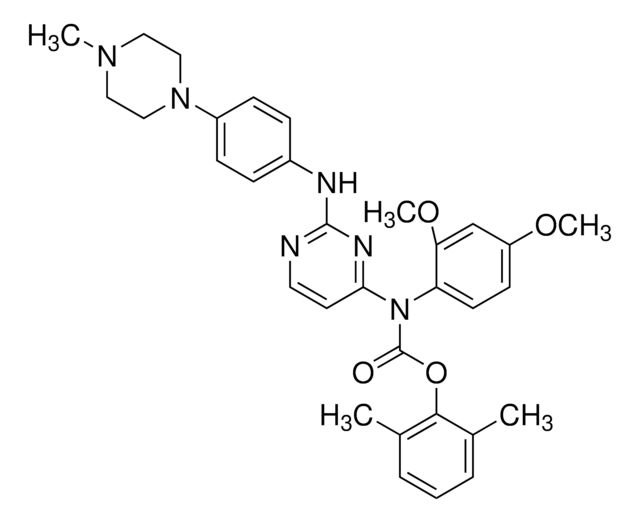SML1093
Articaine hydrochloride
≥98% (HPLC)
Synonym(s):
4-Methyl-3-[[1-oxo-2-(propylamino)propyl]amino]-2-thiophenecarboxylic acid methyl ester hydrochloride, Carticaine chlorhydrate, Carticaine hydrochloride
About This Item
Recommended Products
Quality Level
Assay
≥98% (HPLC)
form
powder
storage condition
desiccated
color
white to beige
solubility
H2O: 20 mg/mL, clear
storage temp.
2-8°C
SMILES string
CC1=CSC(C(OC)=O)=C1NC(C(C)NCCC)=O.Cl
InChI
1S/C13H20N2O3S.ClH/c1-5-6-14-9(3)12(16)15-10-8(2)7-19-11(10)13(17)18-4;/h7,9,14H,5-6H2,1-4H3,(H,15,16);1H
InChI key
GDWDBGSWGNEMGJ-UHFFFAOYSA-N
Gene Information
human ... SCN10A(6336) , SCN11A(11280) , SCN1A(6323) , SCN2A(6326) , SCN3A(6328) , SCN4A(6329) , SCN5A(6331) , SCN7A(6332) , SCN8A(6334) , SCN9A(6335)
Looking for similar products? Visit Product Comparison Guide
Biochem/physiol Actions
Signal Word
Warning
Hazard Statements
Precautionary Statements
Hazard Classifications
Eye Irrit. 2 - Skin Irrit. 2 - STOT SE 3
Target Organs
Respiratory system
Storage Class Code
11 - Combustible Solids
WGK
WGK 2
Flash Point(F)
Not applicable
Flash Point(C)
Not applicable
Choose from one of the most recent versions:
Certificates of Analysis (COA)
Don't see the Right Version?
If you require a particular version, you can look up a specific certificate by the Lot or Batch number.
Already Own This Product?
Find documentation for the products that you have recently purchased in the Document Library.
Global Trade Item Number
| SKU | GTIN |
|---|---|
| SML1093-50MG | 4061832576916 |
Our team of scientists has experience in all areas of research including Life Science, Material Science, Chemical Synthesis, Chromatography, Analytical and many others.
Contact Technical Service






